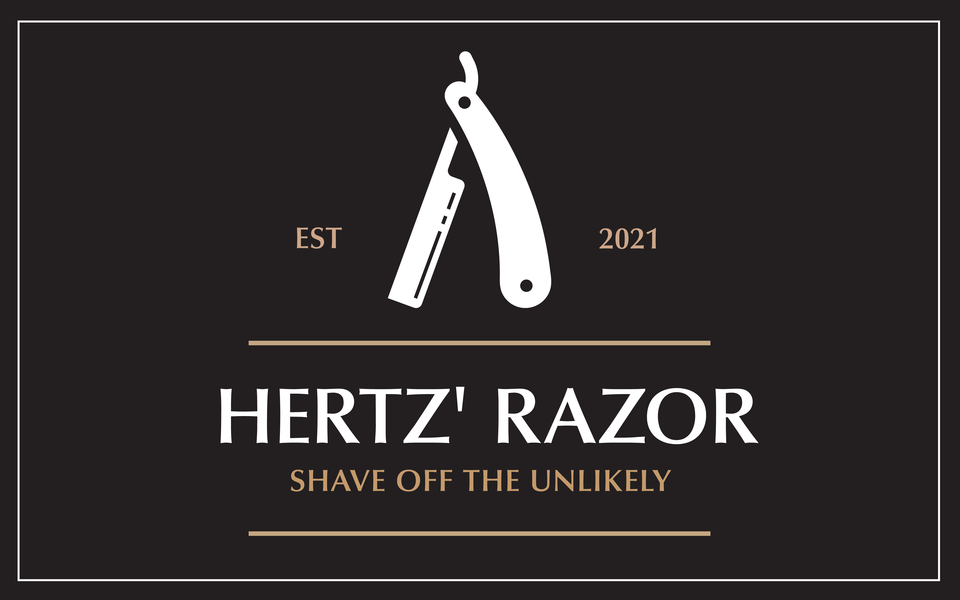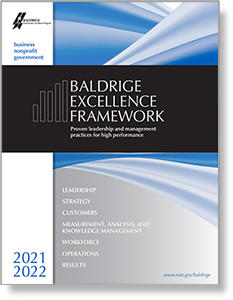Blogrige
The Official Baldrige Blog

Razors
This blog post was conceived when I was recently reminded of Hanlon's Razor, a rule of thumb that states, One should never attribute to malice something that is adequately explained by stupidity. The razor led me to contemplate work environments focused on punishing the employee (perpetrator) when an error is made, essentially attributing it to intent or malice. In most cases, I would contend that the cause of the error is neither malice nor stupidity. This logic led me to propose Hertz' Razor. But, I will keep you in suspense for a while...
I next wondered, why is Hanlon's Razor called a razor? A "philosophical razor" is a rule of thumb used to eliminate ("shave off") an unlikely explanation for an observed phenomenon. There are a number of such razors that have received wide attention, starting with Occam's Razor, which states, Entities should not be multiplied without necessity. More commonly explained, it means that the best and correct explanation is usually the one with the fewest assumptions. Occam is William of Ockham, an English friar, philosopher, and theologian who was believed to have been born in the English town of Ockham in 1285.
In doing some research, I discovered several additional razors of interest. One of particular value to this blog is Hitchens' Razor, which states, What can be asserted without evidence can also be dismissed without evidence. I interpret this statement to mean that we should manage by fact, a Baldrige core value.
Hertz' Razor
I am in fundamental agreement with Hitchens' Razor (no surprise) and fundamental disagreement with Hanlon's Razor. Since it seems to be an emerging trend to have razors that begin with "H," I humbly put forth Hertz' Razor:
- One should never attribute errors to employee malice or stupidity or any other employee intent, but instead seek process defects or lack of information/data as the likely cause.
Employees are proud of their work and seek to make improvements, not to sabotage the work. Furthermore, they seek training, education, and developmental opportunities to further their own learning and their contributions to the organization. Indeed, the Baldrige definition of organizational performance excellence originally comprised (1) delivering ever-improving value to customers and stakeholders and (2) improving the organization's overall effectiveness and capabilities. However, many years ago, based on our learnings from role-model organizations, the definition was expanded to include (3) learning for the organization and for people in the workforce.
Given the Baldrige definition of performance excellence, a corollary to Hertz' Razor is
- Organizations should strive for error prevention and innovation, not error correction, as the primary means of improvement.
Achieving Hertz' Razor
Hertz' Razor and its corollary are really a metaphor for using the Baldrige Excellence Framework and its criteria for performance excellence. Let me exemplify with a few of the key criteria components:
- Item 1.1, Senior Leadership, asks how senior leaders participate in the development of future leaders and how they create a focus on action that will improve the organization's performance.
- Item 2.1, Strategy Development, asks how your organization's strategy development process stimulates and incorporates innovation.
- Category 4, Measurement, Analysis, and Knowledge Management, asks how your organization selects, gathers, analyzes, manages, and improves its data, information, and knowledge assets; how it uses review findings to improve its performance; and how it learns.
- Item 5.2, Workforce Engagement, asks how your learning and development system supports the personal development of workforce members and your organization's needs and how you manage career development for your workforce and your future leaders.
- Item 6.1, Work Processes, asks about key requirements for your work processes, how you manage and improve processes, and how you pursue opportunities for innovation.
- Item 6.2, Operational Effectiveness, asks how you prevent defects, service errors, and rework.
- Category 7, Results, asks about your organization's performance and improvement in all key areas.
In summary, the Baldrige Excellence Framework takes a holistic approach to organizational performance and how high performance is achieved. It recognizes that high performance is achieved through effective strategy; high-performing, motivated employees; well-structured operational processes; process improvement; and innovation.
The Baldrige Scoring Guidelines characterize organizations that have no systematic processes and that react to problems as their primary improvement mechanism as very immature. The Guidelines describe stages of maturity as organizations move toward role-model performance characterized by fully deployed, systematic processes; innovation; and the development of best practices.
Even the most immature organizations are not characterized in Baldrige as looking for employees as the cause of problems. Is your organization practicing Hertz' Razor and working on high performance through its corollary?

Baldrige Excellence Framework
The Baldrige Excellence Framework has empowered organizations to accomplish their missions, improve results, and become more competitive. It includes the Criteria for Performance Excellence, core values and concepts, and guidelines for evaluating your processes and results.
Purchase your copy today!
Available versions: Business/Nonprofit, Education, and Health Care





